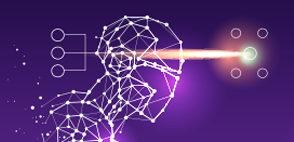These days, it seems that artificial intelligence (AI) has finally taken over. Wherever we turn, we hear about generative AI, ChatGPT, Bard, Midjourney, and other tools. Almost every organization has its own AI ambitions of what their AI will look like, or they are already employing it. Some companies are even going as far as to rebrand their old rule-based engines as AI-enabled.
Your Network's Edge®
About the Author
You are here
 |
Dr. Yosef Yehuda (Yossi) Kuttner, Ph.D.ML/AI Researcher at RAD's Innovation Lab Yossi Kuttner, a data scientist and algorithm developer focuses on integration of machine intelligence technologies - ML and AI research - in the world of communication networks. He holds a Biochemistry and Computer degree from Bar-Ilan University, a master’s degree in bioinformatics and a Ph.D. degree in Biophysics, both from the Weizmann Institute of Science. In his spare time, Yossi enjoys painting and broadening his horizons in the world of science. |
All Posts by Dr. Yosef Yehuda (Yossi) Kuttner, Ph.D.
-
Nov 01, 2023
-
Aug 08, 2023
These days, it seems that artificial intelligence (AI) has finally taken over. Wherever we turn, we hear about generative AI, ChatGPT, Bard, Midjourney, and other tools. Almost every organization has its own AI ambitions of what their AI will look like, or they are already employing it. Some companies are even going as far as to rebrand their old rule-based engines as AI-enabled.
-
Apr 19, 2023
Anomaly detection is a crucial task in many fields, including cybersecurity, networking, finance, healthcare, and more. One of the major challenges in anomaly detection is the difficulty of clearly distinguishing between normal and abnormal behavior, as in some applications the boundary between the two is usually not precise and evolves over time. Therefore efforts are constantly being made to develop algorithms that will be as fast, robust and accurate as possible.


